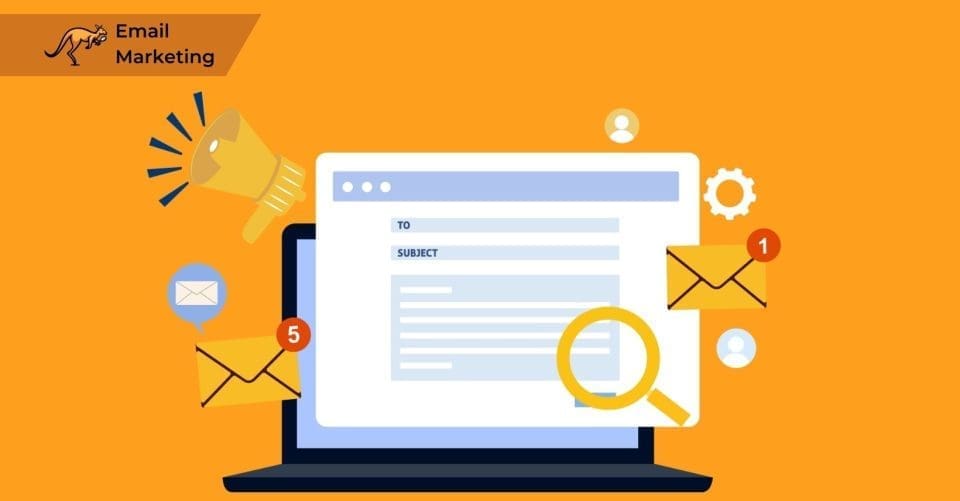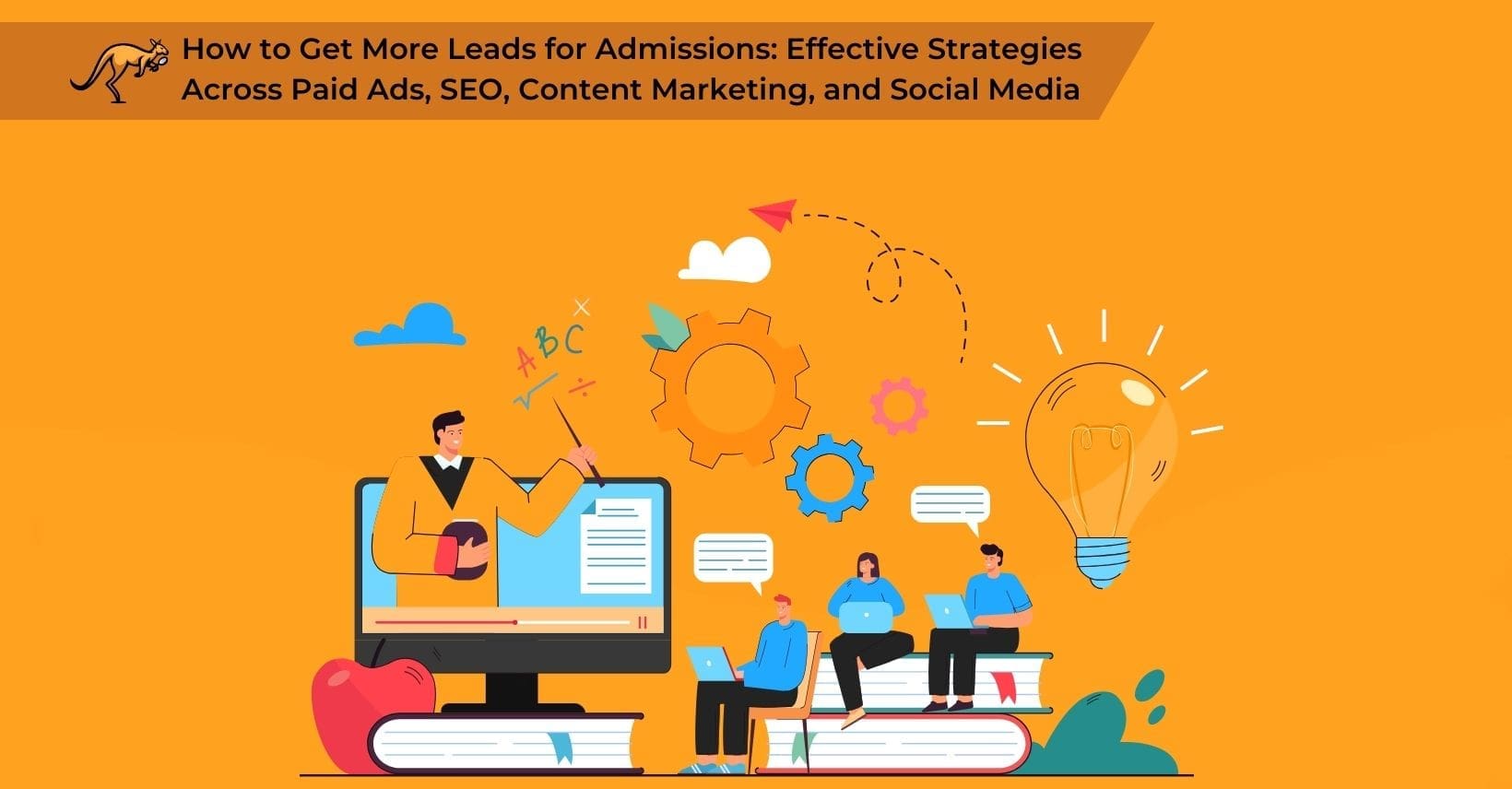Lead generation is tough as a whole, but this is especially true for higher education lead generation. Student leads are not only hard to generate, but you can’t always rely on your usual lead ads to draw them in.
If you want to have a chance at drawing in future students that will make a huge impact on your organization, then you need to build a lead generation strategy worth using. But how do you draw in student leads effectively?
How to Generate Student Leads

Generating qualified leads involves leveraging a combination of organic and targeted campaigns to attract prospective students effectively. Given the limited resources available to educational institutions, they often employ a variety of proven lead generation and marketing strategies. This widespread adoption reflects a strategic approach in reaching potential students from various angles.
These methodologies lead us directly into exploring Paid Admissions Lead Ads, one of the most impactful tactics used by educational programs nationwide to enhance their recruitment efforts.
Paid Admissions Lead Ads
Paid ads serve as a direct and potent method for generating leads, ensuring that potential students potentially discover your higher education institution for the first time. These ads not only target students actively seeking exact academic programs but can also engage those uncertain regarding their university choice.
Effectively designed lead ads have the potential to reach beyond their initial audience, drawing in student leads that were different from the original focus.
This broad-reaching impact of lead ads sets the stage for a deeper exploration into Search Ads, where targeted messaging can further enhance visibility and attract prospective students.
Search Ads
Advertising on search engines gives you a lot more lead generation strategies that you can rely on. Targeting the right keywords ensures that you are getting the education leads you expect, allowing you to pick your target audience and choose whatever terms they search for the most.
Search ads also have the benefit of letting you use platforms like Google Ads, which can be ideal for gathering information. Data regarding search engine results can show you the keywords needed to build awareness, drive traffic to your landing pages, draw in new leads, and direct visitors to your lead capture forms.
Site Ads
Placing ads on relevant sites through networks like Google Ads enhances lead generation by targeting audiences interested in higher education. Choosing the right websites can greatly amplify your higher education lead generation efforts, attracting prospective students actively seeking information.
As your organization’s presence expands, drawing students becomes increasingly straightforward. This strategy of increasing visibility and targeting exact demographics naturally transitions into our next topic, Search Engine Optimization, which further optimizes your reach and impact.
Search Engine Optimization
SEO offers a straightforward approach to generating student leads by boosting your brand’s visibility through targeted keywords and enhancing your presence in search engine results. By strategically selecting relevant keywords, your site and marketing materials become more visible at critical moments, effectively using SEO’s power to capture leads within exact niches.
This precise alignment of content with user searches underscores the importance of our next focus, Site Improvements, where we’ll delve into optimizing website features further to enhance this targeted visibility and lead generation efficiency.
Site Improvements
Optimizing your website improves load times and overall functionality, which is critical for retaining leads. A fast-loading landing page is essential, as delayed access can deter even the most interested prospects. To attract and secure new leads, ensure they encounter an efficient experience by directing them to content-rich, quick-loading pages.
Poor website performance can tarnish your organization’s image. This emphasis on optimized user experiences seamlessly transitions into our next strategy: Email Marketing, where we continue to engage leads through targeted, efficient communication.
Email Marketing

Many effective strategies exist for generating student leads, yet one of the simplest is sending personalized messages to potential leads. This approach fosters a direct connection, encouraging their interest in enrolling at your institution.
Personalization enhances engagement particularly more than automated responses, setting the stage for direct communications like physical mail, which we will discuss next as another impactful method in our lead generation toolkit.
Physical Mail
While physical mail is less cost-effective than email marketing, it can be highly effective when used correctly. To maximize its potential, you must accurately know the recipient’s address, target them effectively, and craft a letter that resonates with them. This complexity allows for a more personalized approach compared to digital methods.
Such personalized communication paves the way for diverse strategies under content marketing, where we explore creating impactful content to potential leads’ needs and interests.
Content Marketing
Content marketing is one of the more subtle ways of appealing to your target audience.
Creating blog posts or website content designed to draw in interested students gives you an easy way to get them onto your site, allowing you to fill the landing page with promotional material that can hopefully hook them.
This is an excellent option for turning prospective students into interested leads.
As long as you can produce valuable content, you might see a spike in your conversion rates, as well as more traffic on your landing pages and higher website traffic overall. This increases your digital presence among your target audience, even if it can be time-consuming.
Blog Posts
While a form of content marketing, blog posts (either from staff or current students today) can be used to draw in your target audiences and secure more students.
You do not have to become a new thought leader that posts creative content daily – you just need to post enough to form a decent blog marketing strategy.
Blogs are a great place to earn qualified leads. Posting a consistent blog regarding higher education life, current student progress, or any other kind of relevant information can make a huge difference to your active presence on the internet.
Engaging content captures the attention of website visitors and encourages them to spend more time on your site. Conducting a competitor analysis can provide important insights that help optimize user engagement and increase site retention.
These strategies, focused on enhancing visitor interaction, led us to explore another effective method for boosting engagement: Guest Posts. This transition emphasizes integrating various content approaches to maintain a dynamic and interactive website.
Guest Posts
Guest posting on external sites is a powerful method for driving traffic to your landing page and enhancing your SEO, particularly effective in higher education lead generation where each backlink contributes immensely. By hosting your content on reputable sites or commissioning articles, you can leverage these platforms for lead generation.
This strategy, widely used due to its effectiveness, ensures that high-quality content translates into potential leads. Transitioning from guest posts to the next element of your strategy, Social Media Platform Advertising offers another avenue to amplify your message and further engage your target audience.
Social Media Platform Advertising
Platforms like Twitter and Facebook can be great sources of prospective students, making them ideal for a special lead generation strategy.
Not only can you establish Twitter and Facebook lead ads through the promotional features, but you can make normal posts to bring in organic traffic that might be worth targeting as well.
There are a lot of ways to generate leads through these platforms. Facebook lead ads are only one of the many lead generation strategies that you can come up with using social media, but it depends on your overall marketing strategy and existing social media presence.
Either way, being signed up to social media platforms is always a good thing.
Social media ads serve as effective lead-generation tools, but their utility extends beyond advertising to facilitating direct communication with potential students. Using social media platforms as digital messaging channels, universities can engage prospects directly, avoiding the impersonality of automated replies or generic emails.
This direct engagement strategy seamlessly transitions into exploring other ways to enhance your lead generation tactics.
Other Ways to Improve Your Lead Generation Strategy
While the aforementioned lead generation tactics are effective, attracting leads in higher education demands more subtlety to truly engage prospective students. Success hinges not on the sheer volume of website visitors, but on capturing the interest of as many potential students as possible.
This focus on quality over quantity naturally leads into exploring enhanced strategies. Below are some ways to improve your lead generation strategy, ensuring a seamless transition from general methods to targeted approaches in higher education.
Simple Ads
Sometimes, using simple paid ads can be enough to push you into a new market. If you have some budget left over and nowhere in your marketing strategy to spend it, then a few banner ads or some paid content can make quite a big difference.
It is not a bad idea to supplement your larger marketing efforts with smaller and more distinct kinds of lead generation. Even if the main bulk of your lead work is already done, it can’t hurt to push a little more marketing content out toward your target audiences.
Use Lookalike Audience Data
Try looking at your past successes when it comes to marketing campaigns. You can use old data as a vague baseline for the kind of people you will be marketing to in the present.
In most cases, students will remain mostly the same between admission years, allowing you to rehash the same data over and over again if you are targeting a general audience. This makes the initial parts of your lead generation planning much faster.
Offer Lead Magnets
Sometimes an offer of something free can be enough to turn the tide in your favor.
For example, a state university might choose to offer campus tours in its marketing material. This is not anything special, but the fact that it is mentioned means that more students may take notice, even if it is something that other institutions are also offering.
Higher education can be an expensive prospect for students, so offering something for free can really mean a lot to them. Even if you are just giving away PDFs of useful information to prepare them for university life, it might be enough to turn them over to your side.
Communicate
The best lead-nurturing environment is one where students feel seen and heard. Communication is key.
It is not a bad idea to promote live chat features or other tools that can put the students in contact with an admissions representative directly. The sooner you can get visitors connected with you, the easier it becomes to nudge them into becoming full-on students.
An educational institution that communicates well with its students is a good educational institution. Of course, different platforms are used for different kinds of communication, so it might help to have official accounts on multiple social media or communication platforms.
Plan Ahead
Proper planning is extremely important for dealing with any kind of lead generation work. Not only does proper planning give you more tools to work with, but it can help you avoid important mistakes with your lead generation options.
The education sector is complex, so you want to be completely sure that you are not making any errors when you try to generate leads consistently. Proper planning provides you with a lot more opportunities than just “winging it” and seeing what works.
Careful planning is required to prevent marketing mishaps that could tarnish your reputation among potential students, such as poorly conceived advertisements or misrepresentative branding. Strategic planning enhances your product pages, boosting engagement and conversion rates. This groundwork naturally transitions into the subsequent focus: Lead Generation for Prospective Students, seamlessly linking marketing preparation to student recruitment efforts.
Lead Generation for Prospective Students
There is no perfect way to generate leads. No strategy will work every single time, and you have to constantly adapt your strategies to match the markets that you are aiming for.
This means that you need to keep updating your lead generation options to suit your situation and goals, no matter how precise they might get.
Whatever strategies you build and the option you choose, you will always encounter areas where you can improve or new markets that you can move into. The nature of lead generation means that you are constantly looking to improve what already exists.
Take your time and think over your options. Rushing into a new lead strategy can backfire very badly, especially if you are not prepared to make changes once you start to notice flaws in the plan or discover a new target market that you do not have the budget to pursue.
Useful Guides
Please see some useful guides related to generating more business leads
[a-z category=”Guides” design=”cards” columns=”4″]
Final Thoughts on Lead Generation Strategies
Lead generation in higher education is challenging due to the particular nature of student leads. Effective strategies involve combining organic and targeted campaigns to attract students. Key tactics include Paid Admissions Lead Ads, which directly reach prospective students, and Search Ads, which utilize targeted keywords on search engines like Google to improve visibility and engagement.
Further, placing Site Ads on relevant websites can amplify your institution’s presence. This strategy transitions into leveraging Search Engine Optimization (SEO) to enhance online visibility through strategic keyword use, which seamlessly connects to improving site features for better user experience and retention.
Besides, Email Marketing and Physical Mail offer personalized communication strategies, complementing broader content marketing efforts through blogs and guest posts that drive traffic and engage potential audiences. Social media platforms also play an important role, providing a venue for both paid and organic lead generation.
To continually adapt and enhance these strategies, educational institutions should focus on simple ads, utilize lookalike audience data, offer lead magnets, prioritize communication, and maintain rigorous planning to avoid potential pitfalls in marketing and student recruitment. This proactive approach in lead generation ensures the adaptation to changing market needs and enhances the potential to attract prospective students effectively.





